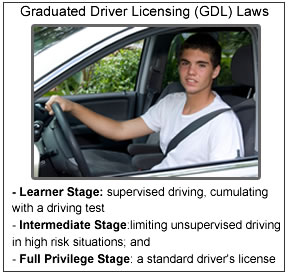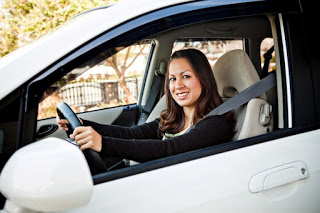
Why Teens are Driving Less
January 24, 2014
America is notoriously known for its driving culture. This is obvious through our freedom to go where we want when we want to individually pervades our movies, music, food, and nearly every other aspect of our lives. Surprisingly though, the “I want it now” generation has taken the proverbial backseat when it comes to obtaining their licenses. According to the Energy Information Administration (EIA), teens are driving progressively less each year.
“Vehicles-miles traveled” (VMT) has dropped a great deal in the past year, dropping 25 percent compared to the past year. It seems that energy consumption plays a significant role in this trend, for U.S. energy consumption that fuels cars is expected to drop one-quarter to 12.1 quadrillion btu’s by 2040.
So is this indifference to driving a passing phase, or are we entering the last bastion of American driving culture? With self-driving cars and technological advantages in automobiles on the rise, driving may actually be on its way out.
Causes for Less Driving
Researchers at the University of Michigan’s Transportation Research Institute (UMTRI) have found that the percentage of young drivers is inversely related to the proportion of Internet users, and those in the “Internet age” are simply driving less. It seems as though social media may take the place of motorized transportation, either fortunately or unfortunately (depending on how you look at it).
“Virtual contact, through electronic means, reduces the need for actual contact,” said Michael Sivak, a research professor in UMTRI’s human factors group.
Sivak is furthering his theory that international data compiled by the Michigan researchers compiled showing that in countries around the world that higher proportion of Internet users throughout the world leads to lower rates of licensed drivers.
The Highway Loss Data Institute (HLDI) disputes this “virtual access” theory. Their analysis demonstrates that U.S. collision insurance policies confirm the trend, showing the 12 percent drop in covered teen drivers since 2006.
“It looks like teens just can’t afford to drive,” said HLDI Vice President Matt Moore. “Paying for their own cars, gas, and insurance is hard if they can’t find a job.”
Choices, Choices
The nonprofit U.S. Public Interest Research Group (PIRG) also feels that something fundamental has changed in how younger people are dealing with transportation.
“Many members of Generation Y have reduced their driving because they choose to take transportation alternatives instead of cars to school, work, and recreation, and because many have chosen to live in ways that require less time behind a card,” PIRG reported. “Growing evidence – both anecdotal and quantitative – suggests that some of this change is being driven by shifts in young people’s priorities and preferences, shifts that could very well persist as Generation Y ages.”
This makes a great deal of sense as car and bike share programs are beginning to pop up in major metropolitan areas. Though theories, these explanations are backed by quantitative data, which is bad news for the automobile industry.

Help Your Teen Become a Better Driver
December 26, 2013
In a recent AAA article, it has been examined that parents who ensure that their teens receive enough practice are more likely to help their teens become safer drivers. Also, though quite unrelated driving, AAA feels that parents who spend more time with their teen drivers prior to them driving on their own also effectively aide in their teens’ driving abilities.
Here at Lowest Price Traffic School, we also place a great deal of emphasis on parental involvement in teen driving. With editionslike Driver Education Handbook for Parents, as well as our Parent Taught Teen Driving course, we help parents more effectively guide their teens into becoming advanced early drivers.
“Unfortunately, teens still have the highest crash rate out of any age group, so it is critical for parents to be involved and use evidence-based techniques that work,” said Dr. William Van Tassel, AAA Manager of Driver Training Programs. “These recommended coaching techniques may seem rather obvious, yet research findings show that parents aren’t regularly practicing these techniques.”
A recent study that surveyed parents and teens during the process of learning to drive found that:
- Nearly half of parents reported that they wanted their teens to get “a lot of practice,” when asked about their teens’ driving skills. Only about one in four parents mentioned practicing in a various situations or conditions, such as bad weather, heavy traffic, or on unfamiliar roads.
- Roughly 47 percent reported that they have not allowed their teen to drive in an unsupervised area, even if they have passed their driving test and received their license.
- Relatively few parents were observed imparting rare driving tips to their teens – such as visual scanning or anticipating other drivers’ behaviors.
Parents should ultimately make sure that their teens receive ample driving practice, which goes beyond getting practice on routine trips on familiar roads. The apparent thought here is that teens will be much more competent drivers, or at least more attentive, in a relatively unfamiliar setting.
If you are looking to bolster your teenager’s driving abilities, then our courses are ideal for you! At Lowest Price Traffic School, we are proud to foster this idea of parent-lead teenage driving safety, and is why we created the programs in the first place. Your children already look to you to learn the rest of life’s lessons, but unlike a few lessons that come from their own personal experiences, the more knowledge you throw their way, the better they will retain the information!

Worried About Passing Your Driving Test?
October 2, 2012
How much have you practiced your driving skills? The GDL Laws of most states require you to get a learner’s permit or instruction permit first before you get your driver’s license. This is the time when you practice your driving skills either with a parent or driver education instructor. Most states require you to have a minimum of 40 to 50 hours of driving practice during the learner’s permit stage. It is suggested to use a driving experience log so you practice all the maneuvers you’ll be tested on. Here is an example to PRINT.
When you are ready to get your license remember the following driving skills as this is what they will be testing you on during the road test:
- Obey the traffic signals and signs
- Avoid hitting the curb or cones while parking
- Three point turn is the most comment reason for failing the exam – so get lots of practice during your learner’s permit phase especially on narrow streets!
- Put on your seat belt before starting the vehicle.
- Properly yielding to other traffic when changing lanes.
- Using your turn signal when turning, changing lanes, or turning into or backing out of a parking space
- Safe driving around school buses and school zones.
- Maintain a two to three-second following distance.

Teens Most Likely To Crash In Their First Month Of Solo Driving
August 16, 2012
- failure to reduce speed,
- inattention, and
- failure to yield.

Study Shows That GDL Laws Work; To An Extent
July 30, 2012
A study published in the Journal of the American Medical Association in September 2011 shows that the death rate for teen drivers under the age of 18 has fallen dramatically over the past several years. However, the good news in this study comes with a downside; the rate of fatal crashes for teen drivers over the age of 18 has risen. The reason for the increase isn’t totally certain but there are a couple of factors that some feel have led to the increase.
The Graduated Driving License (GDL) laws are working as they were designed. GDL laws place restrictions on new teen drivers that limit the number of passengers they can carry, the hours that they can drive, and their ability to use cell phones while driving. These laws were designed to limit all of the distractions that lead to so many teen deaths and, according to the researchers, they have resulted in 1,348 fewer crashes among 16 year olds.
Part of the reason for the increase in the death rate for 18 year olds is that they are now free of those restrictions and, with more passengers in the car and the ability to drive late a t night, they may be entering into driving situations that they have never experienced before and are unable to cope with.
Another reason that some experts have noted is that, with the restrictions placed on 16 year olds to complete driver training prior to getting their license, many teens are now waiting until they are 18 before getting a license. At the age of 18, there is often no requirement for any type of formal classroom or behind the wheel training. The requirement to hold a learner’s permit for a year and document up to 50 hours of supervised driving experience is also lifted for 18 year olds.
By waiting until they are 18, these drivers can often get their license in just a few weeks by passing what is generally a pretty easy driving test at the DMV. They are foregoing a lot of good training that teaches them the skills necessary to avoid collisions on the road.
If you have a teen at home that is waiting until age 18, you should insist that he or she still take all of the required courses required of 16 year olds and get at least 50 hours (ten at night) of supervised driving experience before allowing them to get their license.
